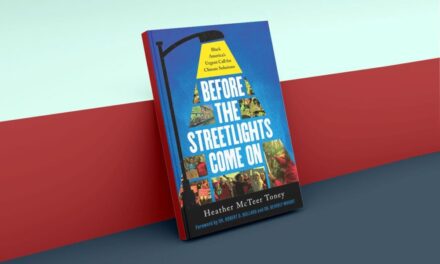UNITED STATES
![]()
New figures show that, following five years of gains, overall completion rates have stalled for three consecutive years. Experts say it could be the result of a decline in student success initiatives owing to COVID or student uncertainty about the value of degrees.
Were it not for the fact that women who began college in 2017 are completing college and university at a rate of 70.8%, 7.4 percentage points higher than the men in this cohort, the overall completion rate of 67.4% (after six years) would have been even lower.
As it is, this completion rate was 1.6% lower than in 2015, the last year of a half-decade that had seen the overall completion rate rise from 61.2% to just under 70%, according to a report released by the National Student Clearinghouse Research Center (NSCRC) on Thursday.
The completion rate for women may have buoyed the overall rate because women make up well over more than half of college and university students, but, says the Completing College 2023 Report, the rate of women completers also dropped from its high of 72.4% in the 2014 cohort and is now only marginally higher than it was in the 2013 cohort.
“What we found overall,” said Doug Shapiro, the NSCRC’s vice-president and executive research director, “is that completion rates for the nation have stalled overall. They’ve essentially been flat for the third year in a row, following five years of gains”.
Beyond the pandemic
With the exception of public two-year community colleges, many of which, in addition to teaching trades, have articulation agreements that allow their graduates who study business or allied health fields, for example, to enter directly into third year at many state universities, the completion rate declined in every sector. Community colleges saw an increase of 0.3% to 43.4% or 309,323 students belonging to the 2017 cohort complete their degree.
By contrast, the completion rate for public four-year institutions declined from 68% to 67.4% respectively in the 2016 to 2017 cohort. Over this same period, the completion rate at private not-for-profit four-year institutions, the sector that includes America’s most prestigious universities, declined by 0.3% to 77.5%. Private for-profit colleges and universities saw the sharpest drop in completion – 1.6% to 46% – in the 2016 to 2017 cohort.
“We’re continuing to see the effects of the pandemic on completion rates in four-year institutions,” suggested Shapiro.
“It’s worth noting that what appears to account for the result, this decline at four-year institutions, is not that students are taking longer than six years to finish. When we compare the six-year rates and the eight-year rates, and we look at who’s still enrolled at the end of six years, what we see is that more students are stopping out [that is, withdrawing from college and university] altogether,” Shapiro said.
“So, we’re not saying: ‘Well, the pandemic seems to have slowed these students down, and they’re likely to take longer to finish, maybe using that eight-year window instead of the six-year window.’ That doesn’t seem to be the case. What we’re seeing is that more have stopped out altogether,” Shapiro added.
Demographic patterns
In the four-year BA streams, every racial-ethnic group saw a decline between the 2016 and 2017 cohorts. For Asians, in public four-year colleges the decline was 0.4% to 80.1%, while at private not-for-profit four-year colleges the completion rate declined a full percentage point to 86%.
The number of white people completing public four-year schools fell from 73.5% to 73.2% and by 0.1% to 81.1% in private four-year institutions. The percent of Hispanics completing public four-year colleges dropped from 57.1% to 56.1% and in private four-year universities from 71.3% to 70.5%.
In public four-year institutions the percent of Black students completing their education dropped precipitously between 2016 and 2017 cohorts, from 50.2% to 48.7% while in private not-for-profit institutions the decline was only 0.1% to 55.2%.
Among men 20 years and younger, the second largest age cohort (after women of the same age), with the exception of Asians, whose completion rate rose from 70.4% to 71.6%, the completion rate of every racial group in the 2016 and 2017 cohorts declined by between 0.1% and 0.9%.
In the next two age cohorts – 20 to 24 years old and older than 24 years – Asian completers declined by almost 2% in each cohort. When comparing the 2016 and 2017 cohorts, the percentage of white people completing post-secondary rose in each age group by 0.4% and 0.3% (to 44.3%) respectively, while Hispanics fell by approximately 0.5% in each age cohort (to 37.9%)
Black men, by contrast, registered substantially higher gains. The completion rate for males between 20 to 24 rose from 27.4% to 29.2% (for the 2016 and 2017 freshmen cohorts), while for Black males 24 years and older the completion rate rose from 34.7% in the 2016 cohort to 37% in the 2017 cohort.
Asian women 20 years old and younger saw their completion rate rise from 81.4% to 81.5% between 2016 and 2017, while for white women of this age the rate stayed steady at 74.6%, as it essentially did for Hispanics at around 56.8%.
The completion rate for Black women in this age cohort declined from 51.3% to 49.8%, likely a manifestation of the fact that during COVID, which hit the American Black community particularly hard, numerous studies showed that younger Black women took on added family responsibilities such as caring for sick parents, grandparents and younger siblings.
The completion rate for Asian women in the 20 to 24-year-old age cohort and the older than 24-year-old cohort diverged between the 2016 and 2017 incoming university cohort. In the younger cohort, the completion rate dropped from 73.2% to 69.1% while it rose from 62.3% to 63.2% in the older cohort.
The completion rate for white women in the younger aged cohort stayed steady at 74.6%. Among 20 to 24-year-old white women, the completion rate in 2016 was 41.1%, rising the next year to 42.2%. In the oldest aged cohort, 47.8% of the 2016 cohort completed college, while a year later the figure rose to 49.3%.
In the 2016 cohort, the youngest group of Hispanic women saw a completion rate of 56.9% and 56.8% a year later. Among Hispanic women between 20 and 24 years old, the 2016 cohort completed college or university at a rate of 35.3%, six percentage points higher than did the 2017 cohort. In the oldest cohort, the percentage of Hispanic women completing college or university rose from 28.4% in the 2016 cohort to 39.2% a year later.
Black women 20 years old and younger experienced a 1% drop in completions between the 2016 and 2017 cohorts, to 49.8%. The completion rate for Black women between the ages of 20 and 24 years old rose between 2016 and 2017 from 29.9% to 30.9%, and in the oldest age cohort, completion rates rose almost two full percentage points to 40.2% in the 2017 cohort.
The picture by states
Nine states saw an increased completion rate of 1% or more: Arizona, Idaho, Indiana, Maryland, Michigan, Montana, New Mexico, North Dakota and Wyoming. Five states, Massachusetts, Oregon, Rhode Island, and Washington saw their completion rates decline by more than 1%.
Of the four states with the largest number of students, California, Florida, New York and Texas, each saw declines in completion by students belonging to the 2016 and 2017 cohorts enrolled in four-year public colleges and universities: California dropped by almost 1% to 65.1%; Florida by 0.2% to 59.6%; New York from 71.4% to 69.6% and Texas from 67.5% to 67%.
The declines in completion by students enrolled in private four-year colleges tracked the declines in public four-year colleges. They were 0.3% in California (to 82.4%), 0.4% in Florida (to 70.9%), 0.4% in New York (to 83.2%) and 1% in Texas (to 76.2%).
Levels of uncertainty
Towards the end of the podcast during which Shapiro discussed the NSCRC’s findings, he was asked why he thinks the completion rates have declined after having stayed the same for three years (which included the worst part of the pandemic).
While admitting that his answer was speculative, he began by saying that over the past decade many colleges and universities focused on student success and that this emphasis showed up in the completion rate numbers. During the past few years, that is, during COVID, universities and colleges have been preoccupied with other issues, he said.
He then turned to what he called the student side of the ledger.
“Students are increasingly concerned, are questioning the value of the degrees they’re pursuing. There’s been a lot of turmoil in the labour markets – that raises the level of uncertainty for students about what they might be able to see in terms of positive employment outcomes when they finish.
“If those levels of uncertainty increase, I think that makes it harder for students who might be struggling to find the motivation to stay in,” he said.




